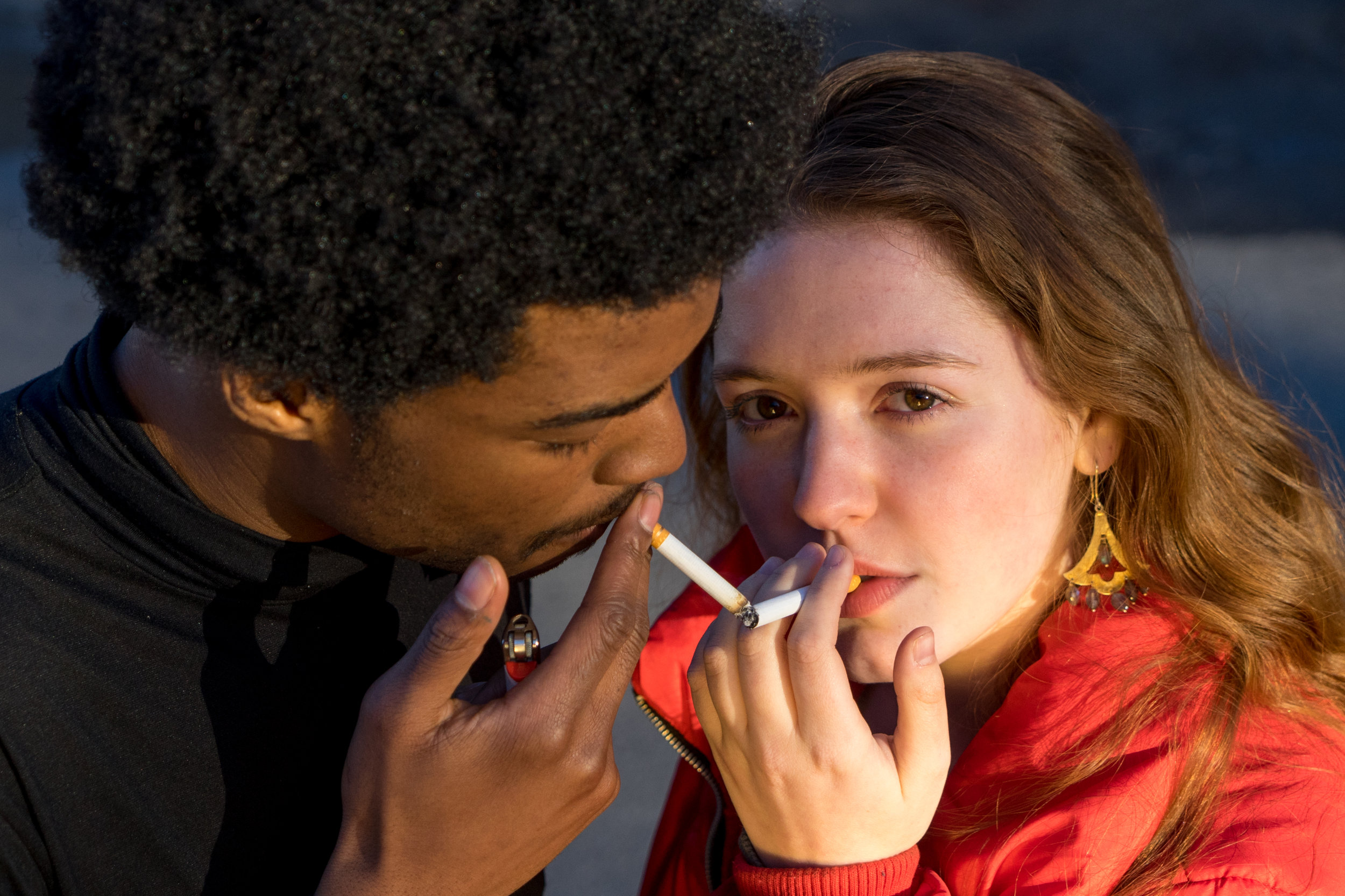Portrait of an Artist: ‘Love Theories’ ponders relationships
October 12, 2018
 Courtesy of Meghan Parsons and Ben Painter
Courtesy of Meghan Parsons and Ben Painter Ben Painter ’19 and Meghan Parsons ’19 collaborated on a photography project titled “Love Theories.” Recipients of the Richard P. Martel Jr. Memorial Prize from the Visual Arts department, their work has been previously featured in the Annual Maine Photography Show as well as a pop-up show at Frontier Cafe and Cinema.
The following interview has been edited for length and clarity.
The Bowdoin Orient: Why did you pick the name Love Theories?
Ben Painter ’19: I’d say “Love Theories” is the name because [we explore] different theories about love and relationships, that’s something that we talk about a lot, debate and have different opinions on; those different theories serve as inspiration for a lot of our photos.
Meghan Parsons ’19: I think it’s really interesting to explore interpersonal interaction and relationships through art. And love is such a broad topic and so complex. People really have different understandings of it … so the process of making photographs to explore love is really interesting.
Q: How did this collaboration come about?
MP: It started [as] kind of exploring what it means to take ownership over photographs. Ben was in a class and he was doing projects, and I influenced his process when I was in the photos … which raises some interesting question about who’s the artist in that situation.
BP: It’s more fun to do it with a friend. I think we both like the idea of pushing against what’s traditionally done in the medium; a lot of people think of photography [as] a solitary exercise, so I think it makes us a little bit unique that we do it together when most people do it alone. Also I’d say you can see it in our work—the tension between our different interests, our different aesthetics and style … Those compromises [in our work] make the work better.
Q: From where do you draw inspiration?
BP: One source of our inspiration is [the work of] other photographers. Julie Blackman is one of our favorite photographers who does these awesome staged tableau photographs of her family. Adi Nes, who had a big exhibit in the art museum, does beautiful large portraits of men and boys, mostly. [Also the work of] Gregory Crewdson.
MP: I feel like just because of the stage of our lives we are in right now … the relationships [and] interactions with other people are the seeds that the work kind of starts with.
Q: Tell us about tableau photography and your creating process.
MP: Tableau photography, as we understand it, is where the photograph is highly staged, and a lot of times it becomes clear to the viewer that it wouldn’t be naturally occurring simultaneously. So a lot of our photos experimented with picking some elements that we wanted to take a picture of, or space or color combination, and just adding and experimenting to kind of construct a narrative or multiple narratives that could be going on.
BP: For multiple hours. The shoots take a few hours.
MP: And [finding models] is kind of a weird dynamic because we want people we can sort of boss around and tell them whatever we want them to do. So we use people that we know really well, like roommates. People we can kind of say “OK, you’re gonna come help me with this.” We’ve also enlisted people who we don’t know that well, who are really interested in art or photography.
 Courtesy of Meghan Parsons and Ben Painter
Courtesy of Meghan Parsons and Ben PainterQ: Why do the models look directly into the camera?
MP: Well, one thing that we play with is acknowledging the absurdity of tableau photography in general. We also felt like having eye contact implicates the viewer in some way. It engages the viewer in the process of looking at the art, and that is especially striking in some of the more intimate scenes that seem private, where the viewer might not be supposed to be looking, so it’s an interesting dynamic between the viewer and the people in the picture.
Q: Is there anything else people should know about Love Theories?
MP: We have an Instagram account. It’s called @love__theories. We’re looking for jobs. Just kidding. Sort of.
BP: Also, we’re always looking for actors.
MP: Yes, if you want to be an actor, email us and you will model for us. And we might buy you food.

Comments
Before submitting a comment, please review our comment policy. Some key points from the policy: